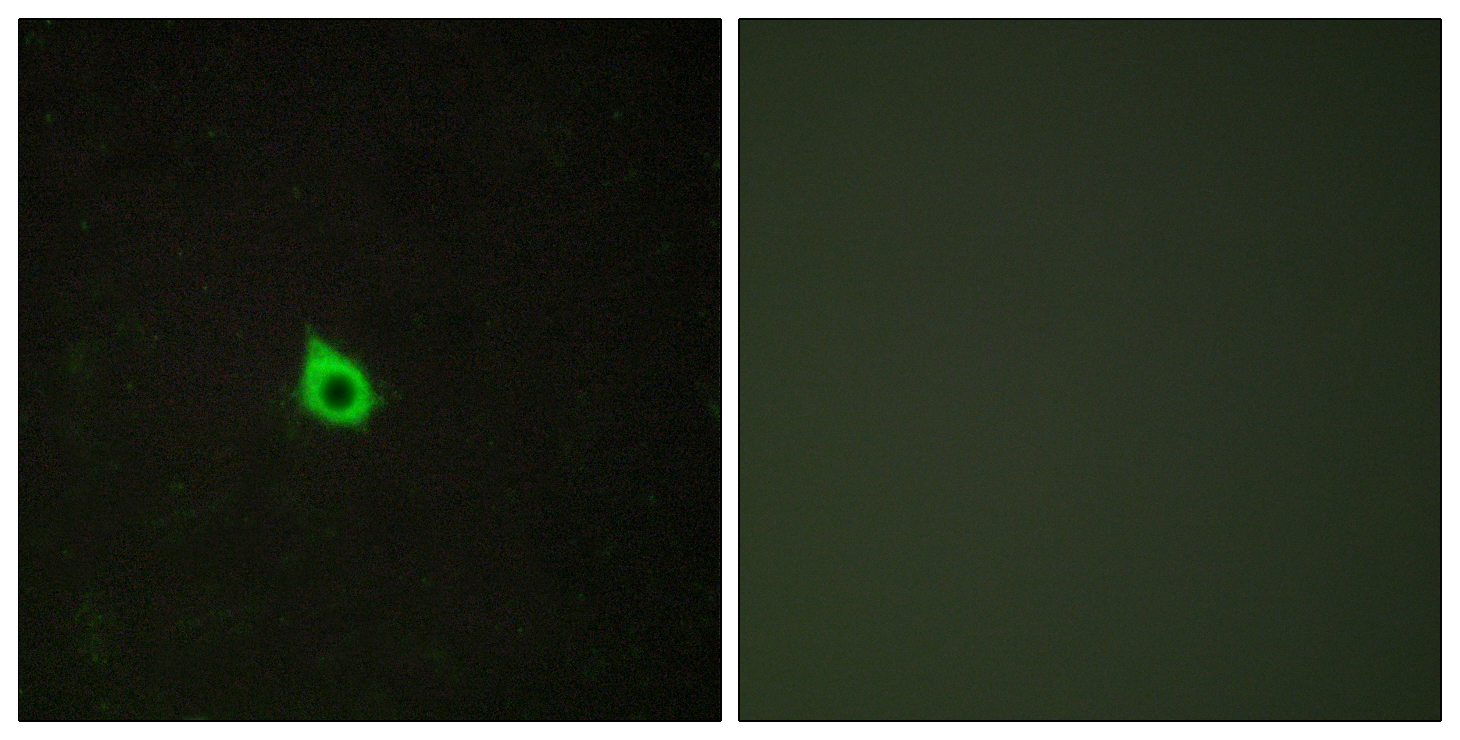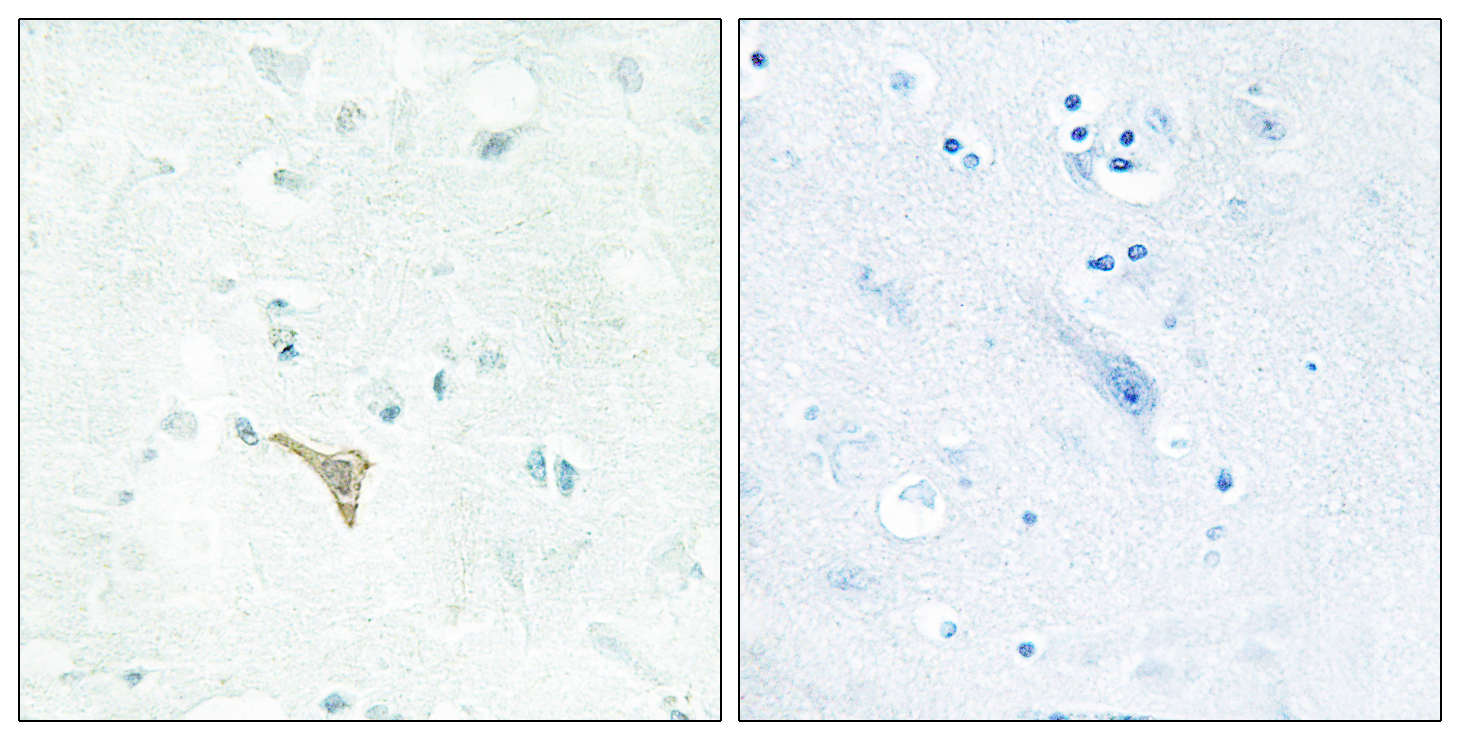RECK Polyclonal Antibody
- Catalog No.:YT4036
- Applications:IHC;IF;WB;ELISA
- Reactivity:Human;Mouse
- Target:
- RECK
- Fields:
- >>MicroRNAs in cancer
- Gene Name:
- RECK
- Protein Name:
- Reversion-inducing cysteine-rich protein with Kazal motifs
- Human Gene Id:
- 8434
- Human Swiss Prot No:
- O95980
- Mouse Gene Id:
- 53614
- Mouse Swiss Prot No:
- Q9Z0J1
- Immunogen:
- The antiserum was produced against synthesized peptide derived from human RECK. AA range:21-70
- Specificity:
- RECK Polyclonal Antibody detects endogenous levels of RECK protein.
- Formulation:
- Liquid in PBS containing 50% glycerol, 0.5% BSA and 0.02% sodium azide.
- Source:
- Polyclonal, Rabbit,IgG
- Dilution:
- WB 1:500-2000 IHC 1:100 - 1:300. IF 1:200 - 1:1000. ELISA: 1:20000. Not yet tested in other applications.
- Purification:
- The antibody was affinity-purified from rabbit antiserum by affinity-chromatography using epitope-specific immunogen.
- Concentration:
- 1 mg/ml
- Storage Stability:
- -15°C to -25°C/1 year(Do not lower than -25°C)
- Other Name:
- RECK;ST15;Reversion-inducing cysteine-rich protein with Kazal motifs;hRECK;Suppressor of tumorigenicity 15 protein
- Observed Band(KD):
- 110kD
- Background:
- The protein encoded by this gene is a cysteine-rich, extracellular protein with protease inhibitor-like domains whose expression is suppressed strongly in many tumors and cells transformed by various kinds of oncogenes. In normal cells, this membrane-anchored glycoprotein may serve as a negative regulator for matrix metalloproteinase-9, a key enzyme involved in tumor invasion and metastasis. Several transcript variants encoding different isoforms have been found for this gene. [provided by RefSeq, Oct 2015],
- Function:
- function:Negatively regulates matrix metalloproteinase-9 (MMP-9) by suppressing MMP-9 secretion and by direct inhibition of its enzymatic activity. RECK down-regulation by oncogenic signals may facilitate tumor invasion and metastasis. Appears to also regulate MMP-2 and MT1-MMP, which are involved in cancer progression.,PTM:N-glycosylated.,similarity:Contains 3 Kazal-like domains.,subunit:Interacts with MMP-9.,tissue specificity:Expressed in various tissues and untransformed cells. It is undetectable in tumor-derived cell lines and oncogenically transformed cells.,
- Subcellular Location:
- Cell membrane ; Lipid-anchor, GPI-anchor .
- Expression:
- Expressed in various tissues and untransformed cells (PubMed:9789069). It is undetectable in tumor-derived cell lines and oncogenically transformed cells (PubMed:9789069).
- June 19-2018
- WESTERN IMMUNOBLOTTING PROTOCOL
- June 19-2018
- IMMUNOHISTOCHEMISTRY-PARAFFIN PROTOCOL
- June 19-2018
- IMMUNOFLUORESCENCE PROTOCOL
- September 08-2020
- FLOW-CYTOMEYRT-PROTOCOL
- May 20-2022
- Cell-Based ELISA│解您多样本WB检测之困扰
- July 13-2018
- CELL-BASED-ELISA-PROTOCOL-FOR-ACETYL-PROTEIN
- July 13-2018
- CELL-BASED-ELISA-PROTOCOL-FOR-PHOSPHO-PROTEIN
- July 13-2018
- Antibody-FAQs
- Products Images

- Immunofluorescence analysis of HepG2 cells, using RECK Antibody. The picture on the right is blocked with the synthesized peptide.

- Immunohistochemistry analysis of paraffin-embedded human brain tissue, using RECK Antibody. The picture on the right is blocked with the synthesized peptide.



